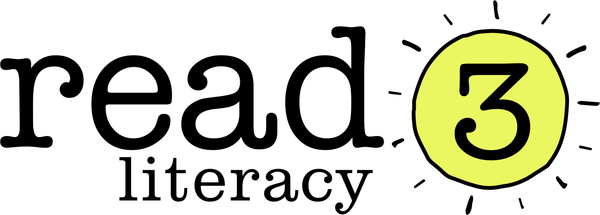Helping kids read better, faster
Focus on what really moves the needle!
By Kate Andrew, Co-Founder of Read3 Literacy
When using a reading program, we are encouraged to demonstrate ‘program fidelity’. This simply means, for best results you should stick to what has been outlined in the program. And that's generally true! However, when you're helping a child who finds reading really tricky, it’s not always that cut and dried...
The Read3 program stems from a therapy-based model and acknowledges that kids learn at their own speed. Some might need lots of help and practice, while others need less. That's why Read3 includes such a wide variety of activities in each step.
But guess what? Not every child needs to do every single activity! Your time helping them is precious, so it's better to focus on giving them the exact support they need, instead of just doing every game or task in order.
Master each reading 'text level'
For kids who pick up reading easily, research shows that as more sounds and letters are introduced they will build skills – practice and reading will come. But for kids who struggle, throwing too many new sounds and letters at them can be very overwhelming! They often get stuck in a laborious loop - sounding out each letter in a word - which has major limitations when it comes to reading text fluently.
To help all kids become strong readers, Read3 focuses on introducing phonic code incrementally, starting with just eight letters. But that’s just part of the picture. Within each program step, reading skills are strengthened in a clear order:

- identifying sounds in words
- learning to link letters to those sounds
- putting sounds together to make small parts of words
- reading whole words
- stringing words together into phrases
- reading full sentences
- reading longer pieces of text
So, with Read3, our focus is on ensuring the child really gets the particular reading 'text level' before moving on, rather than whether they have completed every single activity available. Like we often say in our training, ask yourself:
Do they kinda know it, or are they nailing it?
For kids who find reading hard, being able to read automatically (without having to think too much) is what we are aiming for! The activities provided are simply a tool help them get there.
Using this idea in your sessions
If a child has already learned something well, don't waste time on it – move them to the next challenge! Here are some examples:

- If a child can successfully link letters to sounds (achieved through games like “Memory” or “‘Say That Sound"), start helping them blend those sounds together to make word parts (using "Word Maker"). You can still practice letter-sound knowledge with quick activities like "Letter Line Up" and "Speedy 3."
- If a child can already figure out word parts (using "Word Maker" or "Chunk Check Stage 1"), help them get faster at reading those parts ("Chunk Check Stage 2") and then use them to read whole words ("U-Know Words").
- If a child can already identify the first sound in a word (like in "Word Wish List"), skip games like "Onset Memory" and try something harder - like asking them to identify the last sound or the vowel sound in a word.
- If a child knows their letters and sounds and can write them correctly, skip the simpler handwriting activities like "Easy Alphabet Handwriting" or "Word Wizard." Instead, use those skills in activities like "Word Train," which combines identifying sounds, spelling sounds, and playing with sounds in words. You can still practice making their letter writing automatic ("Speedy 3 Extended" or "Letter Line Up") at the same time, but your teaching is more focused.
But remember, this also works the other way around! If a child is really struggling to blend just two sounds together, asking them to read whole words ("U-Know Words") isn't a good use of your time. Instead, back it up and practise letter-sound links (like "Speedy 3" or "Letter Line Up") and figuring out word parts ("Word Maker"). Once they get better at word parts, you can slowly move on to reading whole words. Make sure to incorporate the chunking strategy featured in our activities to help move them from sound-by-sound decoding to reading words smoothly.
Staying focused on getting it right
Being a good reader means recognising words instantly, but that takes time. By focusing on the reading 'text level' order, you make sure your help stays on track and is effective.
If you're ever worried about whether you're doing things right, just refer to the Read3 Model of Mastery. Paying close attention to what reading 'text level' the child is currently mastering, and selecting activities accordingly, leads to much better results than just playing another round of Bingo or "Say Snap & Spell" because it's fun and the kids like it.
If you have any questions or need help, please don't hesitate to ask!
